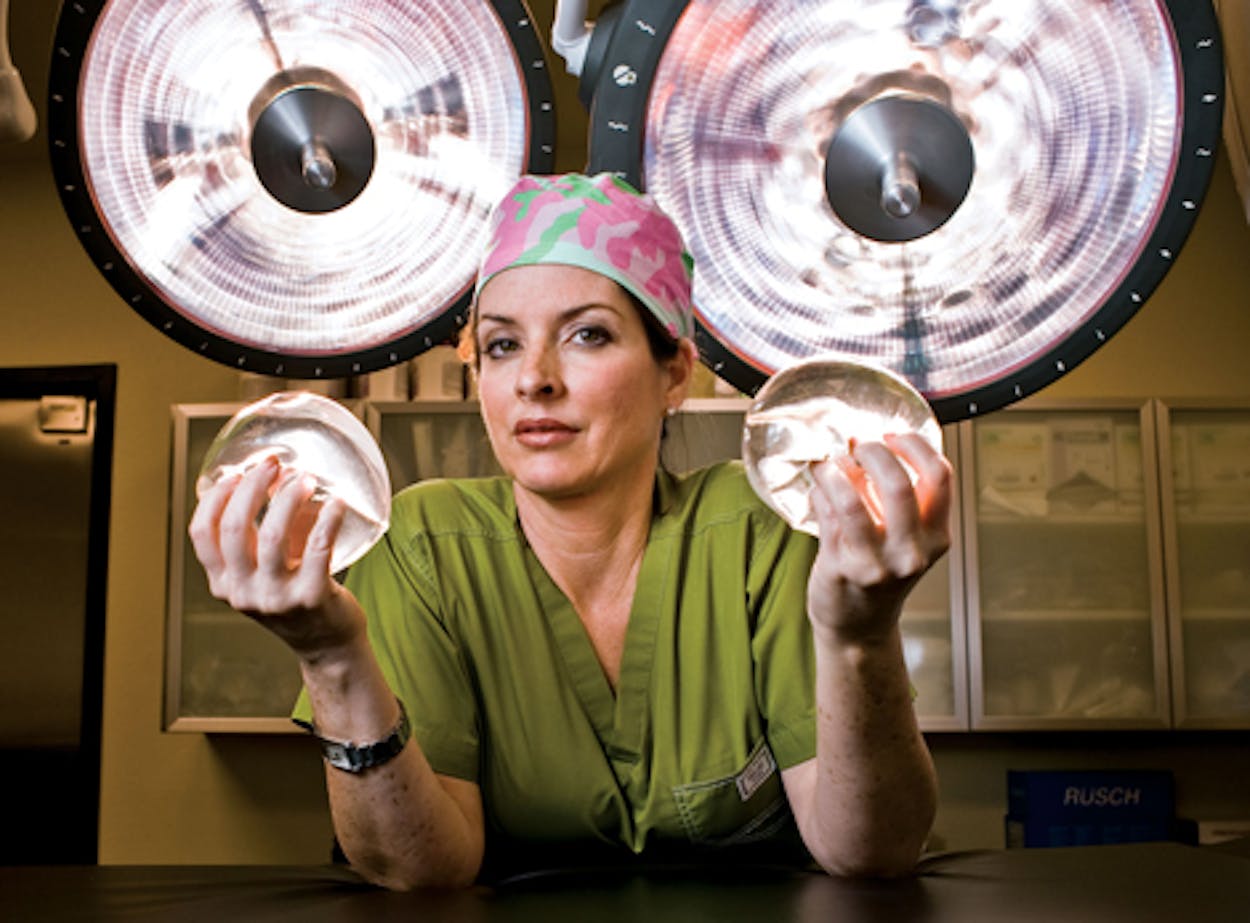Walden, who grew up in Austin, was the salutatorian of her class at the University of Texas Medical Branch at Galveston. After completing an aesthetic surgery fellowship at the Manhattan Eye, Ear, and Throat Hospital, she built a successful practice in New York City, then returned to her hometown in 2011. She is a co-author of the book Aesthetic Plastic Surgery.
I’ve been a practicing plastic surgeon for eight years. I focus exclusively on cosmetic surgery, including breast augmentations, face-lifts, eyelid lifts, and rhinoplasties, or what are known as nose jobs. The cost for an augmentation is about $7,000, whereas a face-lift runs about $10,000 and a nose job falls between $8,000 and $9,000. I also perform liposuction—on the abdomen, inner thighs, and arms—and minimally invasive procedures such as injecting Botox and soft-tissue fillers.
I know I’m a rarity. There just aren’t many female doctors who go into cosmetic plastic surgery. Of the 8,100 or so board-certified plastic surgeons in the country, 851 are women. And of those, only about 180 of us are members of the American Society for Aesthetic Plastic Surgery, which is the leading professional organization of board-certified cosmetic surgeons. And only a dozen of us live in Texas.
I think one of the reasons that plastic surgery—actually, all surgery—is so male-dominated is that you have to go through at least five years of post–medical school training, and sometimes another year or two of a fellowship, to become a surgeon. For a woman, that often means having to delay bearing children. On top of that, the culture of surgery is a little rough, and until recently it’s not been particularly welcoming to women. As a female surgeon, just like a female on Wall Street, I have to prove myself year in and year out. But I’m fine with that.
In fact, being a female plastic surgeon has its advantages. For one thing, 91 percent of all cosmetic surgeries—from augmentations to tummy tucks to face-lifts—are performed on women. And the vast majority of those women aren’t trying to replicate the male ideal archetype of a Barbie-doll body. Not even close. They want surgery because they are embarrassed by an asymmetric or saggy part of their body. Or their body has gone through significant changes after giving birth: their breasts are deflated after breast-feeding or their abdominal wall muscles have spread because of pregnancy. Many of my patients tell me they are more comfortable talking to another woman about certain parts of their body. They also know I will never look at them judgmentally.
I guess you could say I have empathy for my patients, not just sympathy. I’ve also gone through many of the same experiences as my patients have—for instance, I’m the mother of seventeen-month-old twin boys, and I’ve seen my own body change during pregnancy. Although I don’t think I’ll ever need breast implants, I openly tell my patients I will probably some day have a diastasis repair because my abdominal muscles spread after almost going full term with the twins. I’m also not ashamed to admit I’ve done Botox, Juvéderm—that’s soft-tissue filler for laugh lines—and laser to the face, to resurface and tighten my skin.
After working on New York’s Upper East Side for seven and a half years, I moved back to Austin for my sons. I am a single mom by choice, and I wanted them to be closer to our family. Before making the move, though, I did have concerns about how long it would take for me to fill my surgical schedule. One of my main worries was that there wasn’t a cosmetic surgery business in Austin like there was in Dallas or Houston or certainly Manhattan, which is a mecca of plastic surgery. Because Austin is such a green city—what with Barton Springs and Deep Eddy and environmentally sensitive zones—I wondered if its residents might be more inclined to want a natural appearance and be less receptive to plastic surgery.
I figured I’d spend some days tapping my nails on the desk, waiting for the phone to ring. But by the time my plane from New York City had landed, two patients had already booked surgery to have their breasts augmented. Austinites, I quickly discovered, have as much of a desire for cosmetic work as people anywhere else.
I’m sometimes asked why, when I could have chosen any specialty, I picked cosmetic surgery. People who knew that I took a number of women’s studies and psychology classes as an undergrad and that I fancied myself a liberal and a feminist probably questioned why I chose this field. But one of my goals was to help women, to help them improve upon themselves, and the way I saw it, surgery was a way for women to have a better quality of life and a self-confidence they’d never felt. Instead of them living with a real sense of strife about their appearance, surgery made them happy. It made them better—and isn’t that the whole reason you become a doctor in the first place?
I got a call one day from a friend I grew up with. She was a stay-at-home mom of three, and she had relatively small breasts that had been stretched out. She was the ideal candidate for augmentation, but she was always nervous about doing it—until I got back to town. Now she simply looks great. Her breasts are lifted and enlarged, and she is spreading the gospel of cosmetic surgery.
And that makes me happy. Believe me, I wouldn’t be able to sleep at night if I thought that I wasn’t helping people or that I was doing something detrimental to my own gender. If I thought my work was simply an exercise in vanity, I wouldn’t do it.







